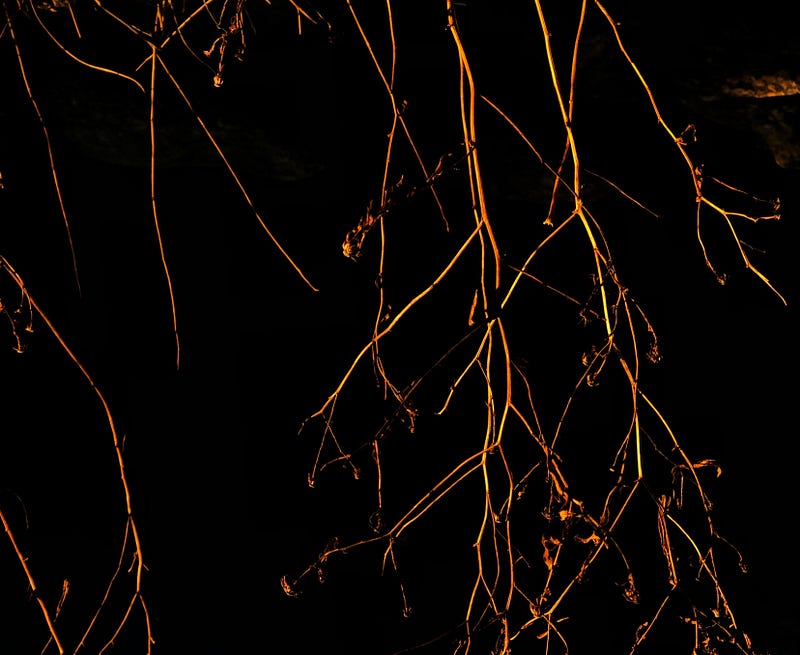Can’t see the forest for the tree? Largest quaking aspen forest is one cloned tree
By Lauren MacDonald, Environmental Science & Chemistry, 2022

Approximately 80,000 years ago, a tiny seed belonging to Populus tremuloides took root in Central Utah in what is now Fishlake National Forest. That seed is now the world’s heaviest organism, spanning 43 hectares and weighing more than 13 million pounds. The giant quaking aspen clone was first described in 1970 by researchers who named it Pando (Latin for I spread), but ecologists have known about the existence of quaking aspen clones for much longer.
Most trees reproduce sexually — pollen grains interact with ovules to create genetically unique offspring — but quaking aspens typically reproduce asexually. Once an individual tree has taken hold, it sends out horizontal root structures under the soil that are capable of growing brand-new sprouts (called ramets) that are genetically identical to the parent and remain connected until an individual dies. Asexual reproduction is what enables Pando to exist: one enormous root mass supporting an estimated 47,000 ramets. Each quaking aspen clone, including Pando, consists of generations of stems from young sprouts to 200 year old mature stems. As each generation matures and dies, younger generations are produced to take its place, and this makes it possible for quaking aspen clone stands to be thousands of years old.
Pando’s vast interconnected root system helps ramets in healthy soils support other ramets, allowing them to take hold in areas where an individual tree would never be able to survive.
The root system of Pando is fascinatingly useful. It performs all the same functions as a typical root system (water and nutrient collection and structural support), but it is also capable of evenly distributing these services across the entire area of the clone. This is especially important when clones reach the size of Pando because not all soil is created equal across the 43 hectares that Pando spans. Some areas are water or nutrient rich while some are too dry to support growth or may not have enough nutrients. Pando’s vast interconnected root system helps ramets in healthy soils support other ramets, allowing them to take hold in areas where an individual tree could never survive because of insufficient water or nutrients. This also means that quaking aspens are more resilient to droughts and other environmental disturbances that might easily wipe out another species and are usually the first to populate an area after an avalanche or other disturbance.
Pando’s roots are capable of more than just nutrient transfer; they also communicate with each other. Growth regulating hormones are passed from ramet to ramet through the root system and tell the entire clone when to flower, sprout, or become dormant. One example of this is auxin. Each ramet produces and stores this hormone, which dampens growth to prevent an excess of new stems in the immediate area. When a generation of ramets dies (from old age, fire, or other factors), those stems stop producing auxin. The resulting decrease in auxin levels signal to the rest of the clone that a generation has died and that it must begin creating new sprouts to replace the lost trees, leading to a surge of new growth.
Asexual reproduction is what enables Pando: one enormous root mass supporting an estimated 47,000 ramets.
Pando has possibly been alive since the last ice age, an impressive feat, but it’s starting to die. A study by Dr. Paul Rogers and Darren McAvoy of Utah State University found that, for the last several decades, Pando hasn’t been producing new sprouts, leaving only older trees that will soon die of aging. Aerial photography reveals that the area of foliage cover has been steadily decreasing over the past 70 years. Human involvement in the area (including campgrounds, vacation homes, and roads in Pando) has increased, and with increased human activity comes forest fire suppression. Fire is an important mechanism for triggering reduction in auxin and promoting new growth in Pando, so new trees haven’t been as quick to replace old ones as in the recent past. Humans have also been artificially increasing the population of ungulates in Utah and across the Western United States for hunting purposes. More browsing deer and elk means that new shoots are being eaten before they can mature enough to withstand grazing by animals, and the overall effect is an aging clone that’s unable to produce younger generations.
Luckily, researchers are becoming aware of the problem and have taken steps to try and protect this wonderful forest. Fencing against browsing ungulates and clear cutting sections to reduce auxin levels have both helped. This one clone is home to dozens of other species, from birds to mammals to other plants, and it would have catastrophic effects on the ecosystem if it were to die. Pando is extraordinary, unique, and vitally important; something we should prioritize protecting.
PLOS ONE (2018), DOI: 0203619
